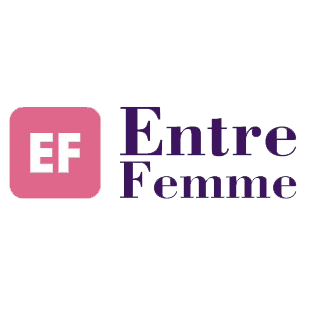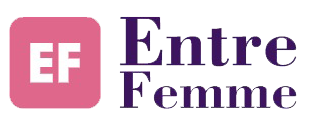Your First Website: Simple Steps for Beginners
Do you have a fantastic idea for a website, but feel overwhelmed by the technical jargon? Don't worry, creating your first website is easier than you think!
- Entrefemme
- May 14, 2025
- 0 Comments
- 2512 Views
This article will be your friendly guide as you take your first steps into the exciting world of web development. We'll break down the process into simple, actionable steps that anyone can follow, with no coding required. From choosing a domain name to designing your layout, we'll equip you with the knowledge and resources you need to bring your website vision to life. Get ready to launch your online presence with confidence!
I. Understanding the Basics:
Pablo Picasso once said, "Good artists copy, great artists steal." This quote doesn't encourage copying and pasting, but suggests that inspiration and creativity often stem from observing and interpreting what already exists, but with a personal touch or a new perspective. In other words, it's acceptable to draw inspiration from the work of others, but the true genius lies in the ability to transform that inspiration into something new and original.
To put it simply, much like those who read books to gain more knowledge, you must browse websites over and over again. Once done, believe me, inspiration will come. But I know that the majority will say: that looking is good, but when you can't find the right tools, it's pointless. Well, that's what we'll see next.
II. Designing Content and Structure:
Before diving into writing your HTML, CSS, and JS code, it's essential to visualize what your web application will look like. To do this, I highly recommend using design tools such as Figma or Illustrator. These platforms offer incredible design features and are very user-friendly. You can sign up for free and start exploring the various design options.
Next, to further enhance your design process, I encourage you to search for free or paid component libraries. These libraries will provide you with a source of inspiration to create your own design. For example, I recommend taking a look at Untitled UI, a library that offers over 400 examples of pages and dashboards with color palettes that you can customize to your preferences. Of course, in the context of visual design, no HTML or CSS code is provided; it's up to you to implement them.
For beginners, I strongly advise designing websites yourself, and taking the time to understand each line of code. However, if you need a mockup quickly and don't want to create everything from scratch, I suggest using Tailwind CSS. This library allows you to quickly create user interfaces using predefined classes. Plus, you can use Tailwind UI, a component library that provides ready-to-use elements for your projects. You have the choice between static CSS or dynamic versions in React or Vue.js.
III. Finding the Right Icon:
When it comes to choosing the right icons for your website, it's essential to ensure they are royalty-free. Using copyrighted images, icons, or other multimedia elements without legal authorization can result in serious legal action. Always make sure to know the origin of the elements you are using.
For Tailwind CSS users, I recommend exploring the options offered by Heroicons. These icons are specially designed to be used with Tailwind CSS and are available for free.
- Recommended icon site for Tailwind CSS:
Heroicons: A collection of open-source icons designed to be used with Tailwind CSS.
Website: Heroicons
-
For other icon options, you can also explore the following sites:
SVG Repo: A platform offering a wide selection of SVG icons, but be sure to check the copyright.
Website: SVG Repo
Font Awesome: One of the most popular icon libraries, offering a wide variety of free and premium vector icons.
Website: Font Awesome
-
Other sites to explore:
Flaticon: A platform that offers a wide range of vector icons, including free and paid options.
Website: Flaticon
Iconfinder: An icon library featuring thousands of options in different categories.
Website: Iconfinder
Material Design Icons: A collection of icons designed according to Google's Material Design principles.
Website: Material Design Icons
Feather Icons: A collection of open-source icons designed to be lightweight, customizable, and easy to use.
Website: Feather Icons
Noun Project: A collection of icons created by a global community of designers.
Website: Noun Project
Iconmonstr: A library of free vector icons, available as SVG files.
Website: Iconmonstr
Simple Icons: A collection of popular brand and logo icons, all available as SVG files.
Website: Simple Icons
Streamline Icons: A premium icon library with thousands of options in different categories.
Website: Streamline Icons
IV. Color Palettes
To find the perfect colors for your website, here's a list of websites offering color palettes, harmonious combinations, and tools to choose the right colors for your projects:
- Coolors: An intuitive color palette generator allowing you to explore and create harmonious combinations with just a few clicks
Website: Coolors
- Adobe Color: Adobe's tool for creating, exploring, and sharing custom color palettes.
Website: Adobe Color
- Paletton: A handy tool to explore different color combinations and create harmonious palettes.
Website: Paletton
- Color Hunt: A collection of trendy color palettes, organized by themes.
Website: Color Hunt
- Flat UI Colors: A selection of vibrant colors inspired by flat UI design.
Website: Flat UI Colors
- Material Palette: Color palette generator based on Google's Material Design principles.
Website: Material Palette
- Happy Hues: Carefully curated collection of color palettes to boost creativity.
Website: Happy Hues
- ColorSpace: Advanced tool to generate color palettes with variations in hues, shades, and tones.
Website: ColorSpace
- Colormind: AI-powered color palette generator for harmonious combinations.
Website: Colormind
- Material Design Color Tool: Google's official tool to explore and create color palettes compliant with Material Design.
Website: Material Design Color Tool
Explore these sites for diverse color options:
- ColorHexa: Comprehensive tool providing detailed information on each color.
Website: ColorHexa
- ColorDrop: Collection of color palettes organized by themes and trends.
Website: ColorDrop
- Adobe Color Wheel: Online tool to explore color combinations and schemes.
Website: Adobe Color Wheel
- BrandColors: Collection of colors used by major brands and companies.
Website: BrandColors
- ColorLisa: Collection of color palettes inspired by famous artists.
Website: ColorLisa
V. Contrast Colors:
In addition to choosing attractive color palettes, it's essential to ensure that your color combinations offer sufficient contrast for optimal readability. Here's a selection of online tools and browser extensions to help you check color contrast:
1. Accessible Colors Contrast Checker: Another online tool that evaluates color contrast to ensure web content accessibility.
- Website: Accessible Colors Contrast Checker
2. ColorSafe Contrast Ratio Checker: This tool calculates the contrast ratio between two colors and provides recommendations to meet accessibility standards.
- Website: ColorSafe Contrast Ratio Checker
3. Stark Contrast Checker: This Sketch and Adobe XD extension allows you to check color contrast directly in your design environment.
- Website: Stark Contrast Checker
VI. Images and Illustrations
Illustrations can bring your web projects to life and make them more appealing to your users. Here are some resources where you can find high-quality illustrations to enhance your designs:
1. Humans: This collection of vector illustrations offers a variety of fully customizable human characters, perfect for creating dynamic scenes in your designs.
- Website:Humaaans
2. Undraw: A library of royalty-free vector illustrations, designed to be easily customized and integrated into your projects.
- Website: Undraw
3. DrawKit: Free and premium vector illustrations for your web and app projects, offering a variety of styles and themes.
- Website: DrawKit
4. Blush: This customizable illustration collection allows you to create unique designs by combining different illustrations in a user-friendly online editor.
- Website: Blush
5. Open Doodles: Hand-drawn, customizable illustrations available as vector files for easy use in your projects.
- Website: Open Doodles
6. Illustrations.co: A library of free vector illustrations for your design projects, offering a variety of themes and styles.
- Website: Illustrations.co
7. ManyPixels: This collection of free vector illustrations is ideal for both commercial and personal use, offering a variety of characters and scenes.
- Website: ManyPixels
8. Absurd Design: Free vector illustrations with a unique and playful style, perfect for adding a touch of originality to your designs.
- Website: Absurd Design
9. IRA Design: A library of colorful and free vector illustrations to spark your creativity and enrich your creative projects.
- Website: IRA Design
VII. Subtle Elements
Blobs are versatile visual elements that can add a touch of creativity and dynamism to your designs. Here are some online tools where you can generate custom blobs for your projects:
1. Blobmaker: This simple and intuitive tool allows you to create custom blobs with different shapes and colors to enhance your designs.
- Website: Blobmaker
2. Get Waves: Generate custom blobs and waves for your designs with advanced customization parameters for unlimited creativity.
- Website: Get Waves
Use these tools to create original and attractive blobs that perfectly complement your designs and add a discreet touch of dynamism to your projects.
VIII. The Ideal Background
To enhance the aesthetics of your websites, using background patterns can be an excellent option. Here's a recommendation for a library of free patterns:
- Hero Patterns: This library offers a variety of free background patterns for your web projects. Explore its different options to find the perfect inspiration.
- Website: Hero Patterns
There are also other sites similar to Hero Patterns that offer a selection of interesting background patterns. Here are a few:
1. Patternico: Offers a collection of customizable background patterns with different color and size options.
- Website: Patternico
2. SVG Backgrounds: Provides a vast library of SVG background patterns with varied styles and customization options.
- Website: SVG Backgrounds
3. PatternPad: This enables you to create and customize background patterns with options for color, size, and density.
- Website: PatternPad
4. Patternizer: Create custom background patterns by choosing from a variety of shapes and adjusting parameters such as color and size.
- Website: Patternizer
5. Khroma: A platform that uses AI to generate color palettes and background patterns tailored to your needs.
- Website: Khroma
6. BG Jar: Offers a collection of free and customizable SVG background patterns for your design projects.
- Website: BG Jar

 | Unlock Success with Our Guide
| Unlock Success with Our Guide



0 Comments